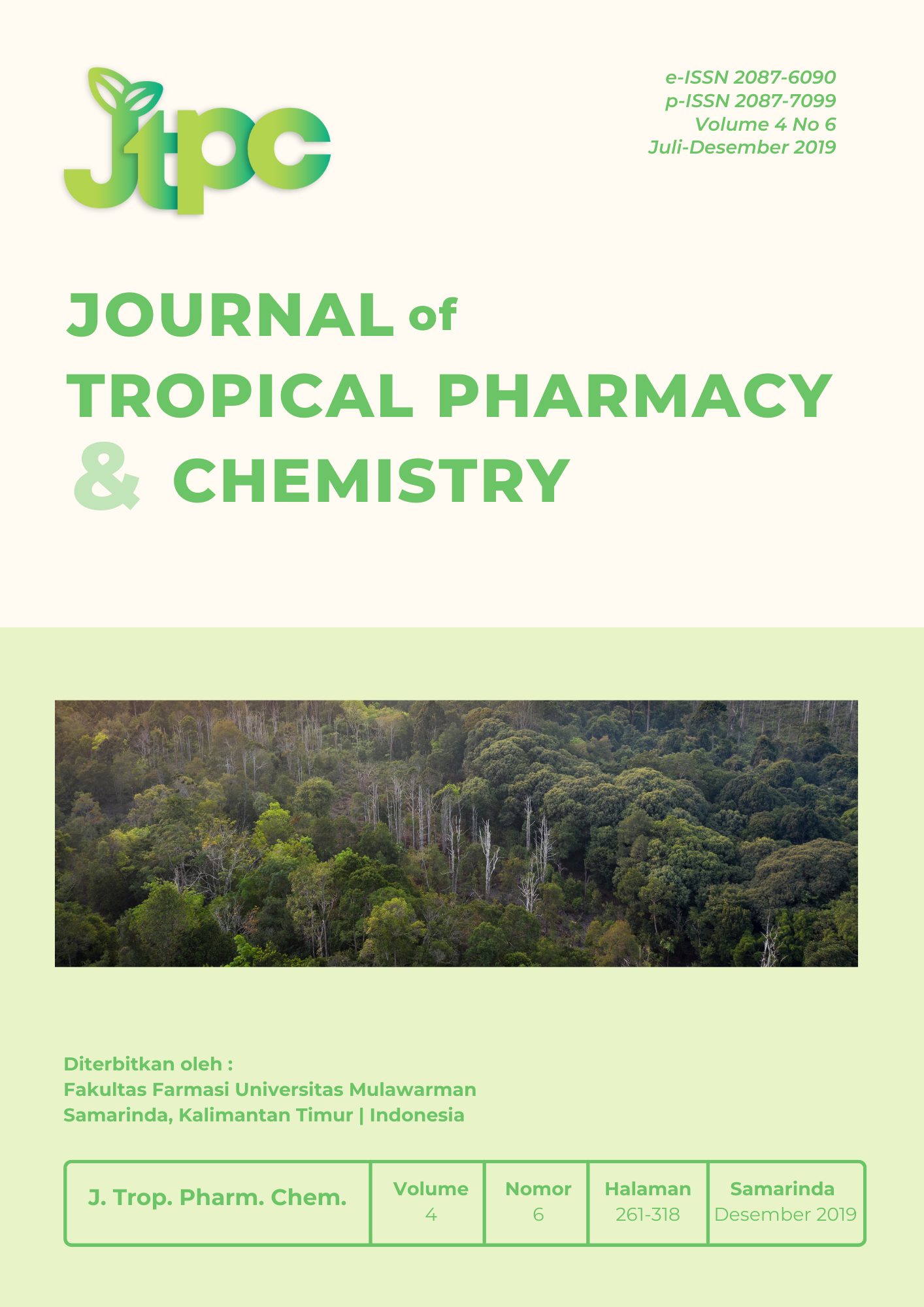Analysis of Caffeine in Tablet Dosage Form with Spectrophotometric and Iodometric Back Titration Methods
DOI:
https://doi.org/10.30872/j.trop.pharm.chem.v4i6.193Keywords:
Caffeine, Tablet, Spectrophotometry, Back titration, IodometryAbstract
Caffeine (1, 3, 5-trimethylxanthine) is an active ingredient that is often added to analgesics drugs to teat headaches or reduce pain. This study aims to quantitatively analyze caffeine levels in tablet dosage forms by spectrophotometric methods and iodometric back titration. In the spectrophotometric method the measurement of caffeine levels was carried out using a maximum wavelength of 272 nm.The results of caffeine levels were found for bodrex drugs (50.87 ± 0.195 mg/tab), extra panadol (64.92 ± 0.579 mg/tab), saridon (51.38 ± 0.273 mg/tab) and paramex (46.78 ± 0.072 mg/tab). The purity percentage of caffeine was found in the range between 93.57-102.76%. While the iodometric back titration method was obtained for bodrex (48.04 ± 0.889 mg/tab), extra panadol (64.45 ± 0.697 mg/tab), saridon (43.38 ± 0.756 mg/tab) and paramex (42.36 ± 0.889 mg/tab) with a purity range of 84.73-99.15%. The average caffeine content of the two method extant suitability close to the true value as stated on the label. The results of the spectrophotometric method are more accurate, while the titrimetry method is still good to use because it is cheaper and only requires simple apparatus and common chemicals.




